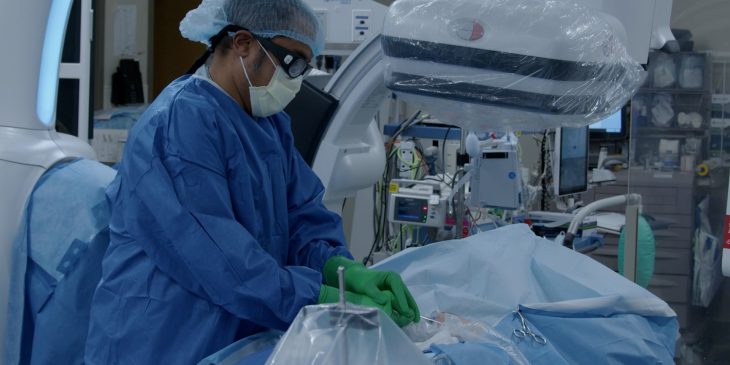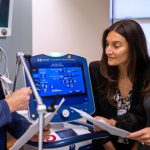Each year, thousands of patients visit UPMC hospitals, outpatient centers and specialty and primary care offices – generating thousands of datasets in the process. Whether it’s demographic information, imaging, lab results, signs and symptoms, family histories or treatment outcomes, there are countless stories for the masses of de-identified data to tell – and physicians like Hemal Gada, M.D., president, UPMC Heart and Vascular Institute in Central Pa., are using artificial intelligence to unravel those narratives.
“Applying machine learning and artificial intelligence to big datasets is a burgeoning field of medical research. In the next five years, we’ll use predictive modeling to precisely define the progression of diseases like cancer and heart disease,” Dr. Gada said.
Certain geographic, demographic, cultural, genetic and generational factors contribute to how diseases develop, progress and affect our bodies. For example, the social and environmental factors that drive the development and progression of heart disease will vary between someone living in rural Appalachia and someone living in an urban or suburban environment.
According to Dr. Gada, machine learning, a type of computer program, allows researchers to identify patterns in vast amounts of patient data. By identifying these trends in a specific subset of de-identified patient data from central Pennsylvania, Dr. Gada hopes to identify the precise factors that drive disease progression in the region – which could someday lead to specialized clinical trials and treatment approaches.
Dr. Gada and his colleagues published a study in The American Journal of Cardiology that utilized this machine learning approach to understand more about the characteristics of the stages of aortic stenosis for people living in central Pennsylvania. Patients with this condition have a heart valve that doesn’t open fully, which reduces blood flow from the heart to the aorta and to the rest of the body. If left untreated, chest pain and shortness of breath can develop, along with a host of other cardiac challenges – including clotting, heart failure, and stroke.
Historically, aortic stenosis patients have typically been assigned to three categories – mild, moderate, and severe. Severe patients typically undergo transcatheter aortic valve replacement (TAVR), but milder severity patients do not. Cardiologists have debated whether moderate aortic stenosis might benefit from a TAVR procedure due to their higher risk for poor outcomes.
Using echocardiograms and patient data from more than 61,000 aortic stenosis (AS) patients at UPMC Heart and Vascular Institute in Central Pa, Dr. Gada and his colleagues developed an algorithm to study the medical histories of these patients over time — How long after diagnosis before they were readmitted to the hospital? What other co-occurring diseases did they have? What signs did the body give to signal that a poor outcome or hospital readmission could be imminent?
The research team determined that moderate AS patients living in central Pennsylvania who have end-stage kidney disease or atrial fibrillation were at the highest risk for poor outcomes. According to Dr. Gada, these patients could need an intervention like the TAVR procedure, sooner rather than later.
While these findings are intriguing, Dr. Gada said this research is hypothesis-generating, meaning it will lead to the development of clinical trials – some of which are already underway.
Artificial intelligence-driven research often leads to more questions than it does answers, but the next time you’re at the doctor’s office and answering questions about your symptoms and health history, remember that you could shape the future of medicine simply by showing up and getting the care you need.
“Your data, which is de-identified in the research process, is just one piece of a much larger puzzle,” Dr. Gada said. “This data doesn’t have to be stagnant; it can help us develop personalized approaches to medicine in our community and determine what health challenges the citizens of our region face. We’re just beginning to scratch the surface of how artificial intelligence can transform health care in central Pennsylvania.”








